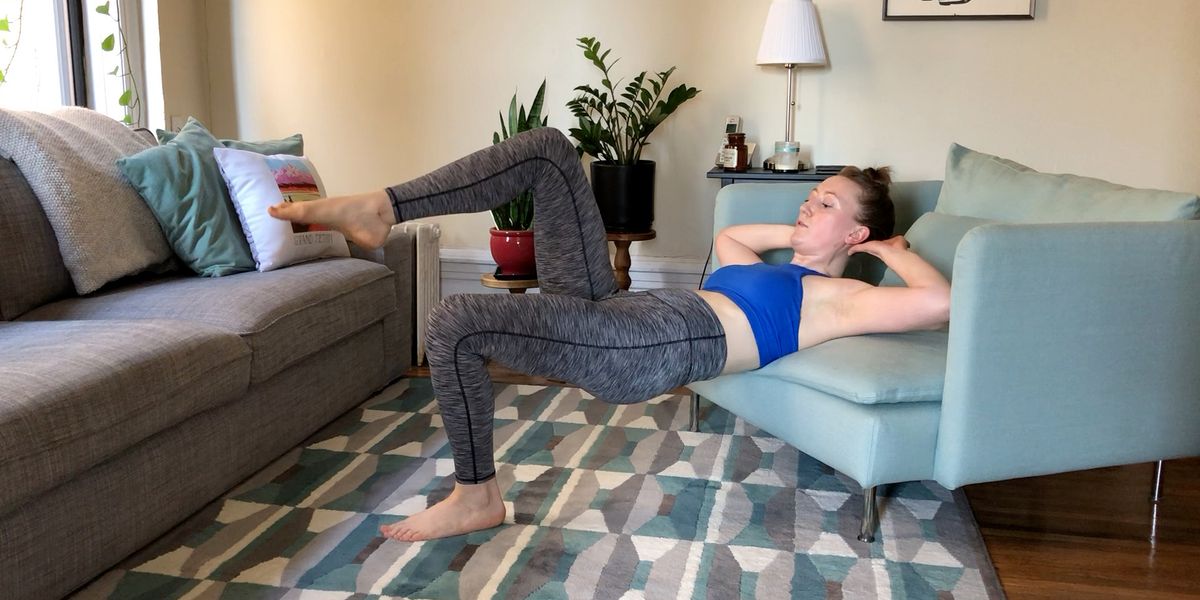For These 3 Personal Trainer-Approved Exercises, the Only Prop Is Your Couch
You don’t need to own lots of fancy equipment to have a successful home workout. (In fact, we already taught you six exercises you can do with just a hand towel.)
Now it’s time to turn your couch into a home gym. As a personal trainer, these are three of my favorite dancer-friendly exercises. Grab the edge of a couch, bed or large armchair—just make sure whatever piece of furniture you use is placed firmly against a wall or heavy enough that it won’t move.
1. Hip thrusts
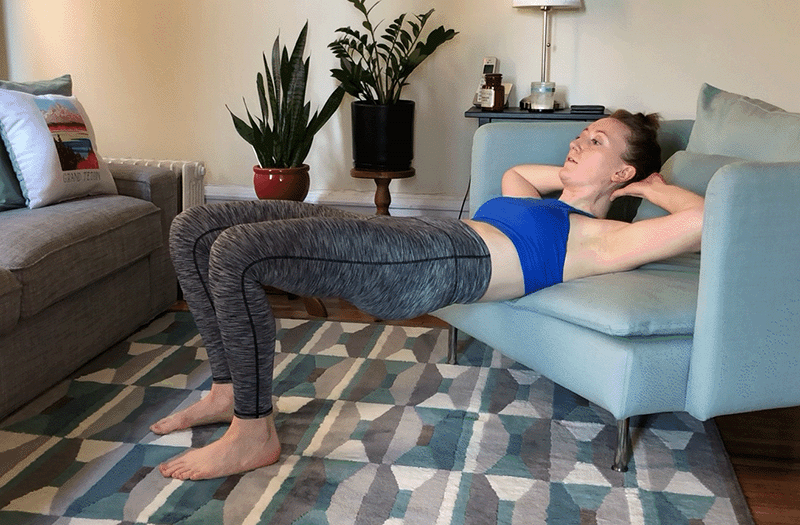
Start in a bridge position with just your shoulders on the couch. Hands can either be behind your head to support your neck or out to the sides for balance. Feet on the floor, hips lifted, and knees bent to about 90 degrees in the starting position.
Hinge at the hips to lower the pelvis toward the floor, and then squeeze the glutes to lift back up to the starting position. That’s one rep.
Do 1-3 sets of 10-15 reps.
Bonus challenge: Single leg hip thrusts.
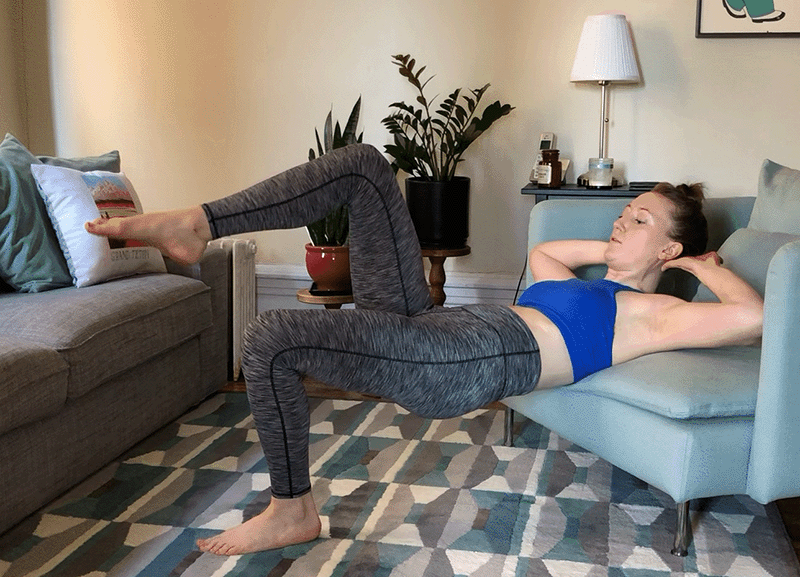
Start in the same position but lift one foot off the floor, lifting and lowering with just one leg.
Do 1-3 sets of 6-10 reps on each side.
Tips and tricks:
When you lift, be sure you’re extending through the hips and not the lower back. Keep the knees pointing straight forward over the toes. In the single leg version, prioritize keeping the pelvis level—no twisting or shifting.
Why it works for dancers:
This is one of the most targeted glute exercises out there, great for dancers because we need strong glutes for single leg stability and power and control in everything from pliés to jumps. Most of us have one side that’s stronger than the other, so the single leg version is particularly helpful for addressing side-to-side differences.
2. Plank to pike
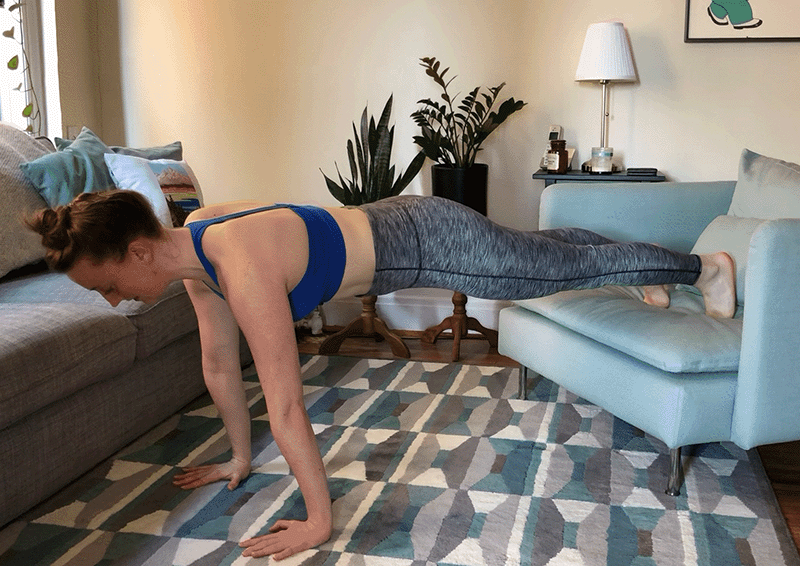
Start in a high plank position (on your hands, not forearms) with feet on the couch.
Walk your hands back toward the couch, sending the hips up toward the ceiling until you reach a pike position. Walk back to where you started. That’s one rep.
Do 1-3 sets of 3-6 reps.
Bonus challenge: Add a pike pushup.
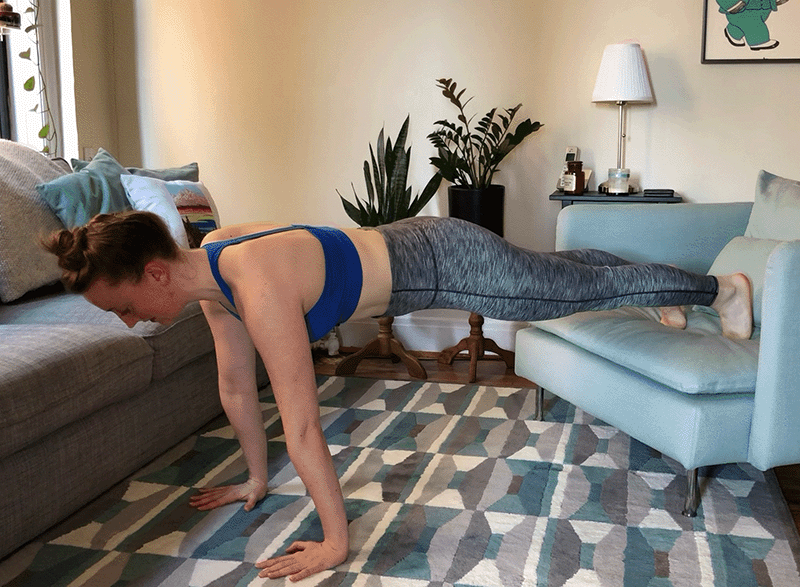
Start in the same position. Walk the hands back, and when you reach the pike position, add one push-up, carefully lowering your head toward the floor. Walk back out to plank. That’s one rep.
Do 1-3 sets of 1-6 reps.
Tips and tricks:
You want to be very active with the shoulders, always thinking of pushing the floor away from you, never sinking down toward the floor. As you pike, try to bend from the hips, keeping the spine as long as possible. In the push-up, only lower as far as you can with control. You’re moving in more of a vertical plane than in a typical push-up.
Why it works for dancers:
Dynamic planks—in other words, planks that involve stabilizing the core as other parts of the body move—are always going to be more effective for dancers than static planks, because they better match the demands of dance. Whether you add the push-up or not, this exercise is great for building shoulder strength and stability for inversions or partnering.
3. Split squats
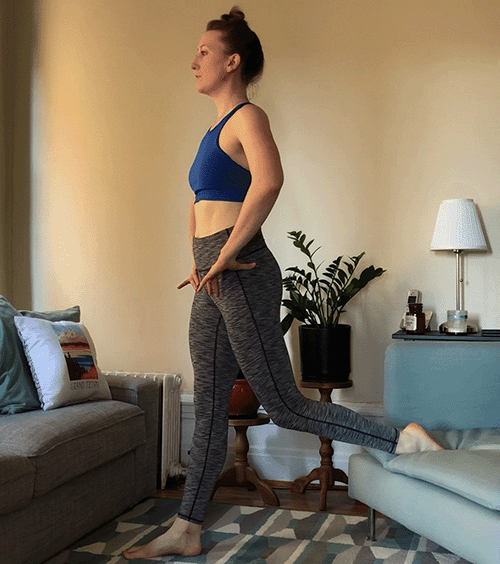
Start standing on one foot, with the other foot on the couch behind you. You can either place the top of the foot on the couch or tuck the toes under depending on your comfort.
Bend the front knee, lowering your pelvis down toward the floor, then drive down through the front foot to stand up. That’s one rep.
Do 1-3 sets of 6-12 reps.
Bonus challenge: Jumping split squats.

Start in the same position. Lower down more quickly, but still with control. As you lift up, spring up into a jump, with the front foot leaving the floor. Repeat without pausing between jumps.
Do 1-3 sets of 1-6 reps each side.
Tips and tricks
: Make sure to keep your hips square and front knee moving straight forward over the toes. Keep your torso as stable as possible. A slight lean forward as you lower down is fine, but avoid excessive movement forward or sideways. In both variations, the work should happen in the front leg. Try to use the back leg as little as possible. When you jump, just like in class, landings should be as quiet and controlled as possible.
Why it works for dancers:
Both variations are great for working on your jumps, with the basic version more focused on strength and the jumping version more focused on explosive power.
